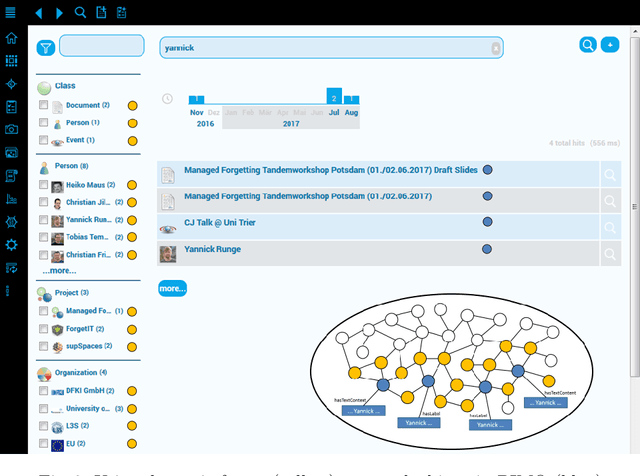Jessica Chwalek
Advanced Memory Buoyancy for Forgetful Information Systems
Nov 17, 2018



Abstract:Knowledge workers face an ever increasing flood of information in their daily lives. To counter this and provide better support for information management and knowledge work in general, we have been investigating solutions inspired by human forgetting since 2013. These solutions are based on Semantic Desktop (SD) and Managed Forgetting (MF) technology. A key concept of the latter is the so-called Memory Buoyancy (MB), which is intended to represent an information item's current value for the user and allows to employ forgetting mechanisms. The SD thus continuously performs information value assessment updating MB and triggering respective MF measures. We extended an SD-based organizational memory system, which we have been using in daily work for over seven years now, with MF mechanisms directly embedding them in daily activities, too, and enabling us to test and optimize them in real-world scenarios. In this paper, we first present our initial version of MB and discuss success and failure stories we have been experiencing with it during three years of practical usage. We learned from cognitive psychology that our previous research on context can be beneficial for MF. Thus, we created an advanced MB version especially taking user context, and in particular context switches, into account. These enhancements as well as a first prototypical implementation are presented, too.
 Add to Chrome
Add to Chrome Add to Firefox
Add to Firefox Add to Edge
Add to Edge